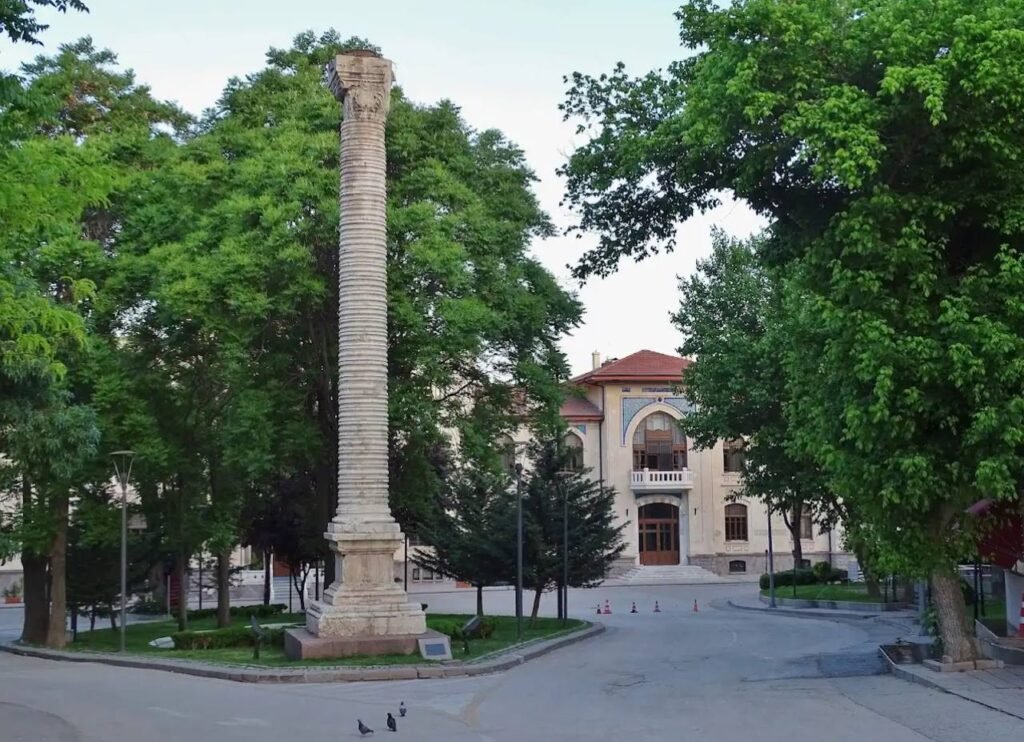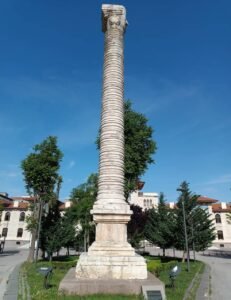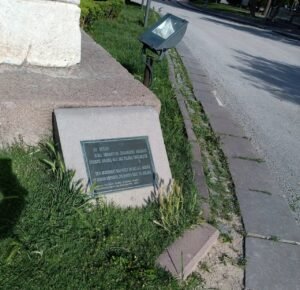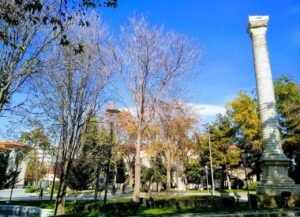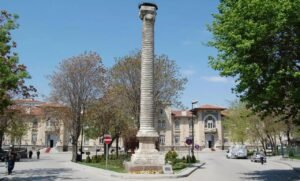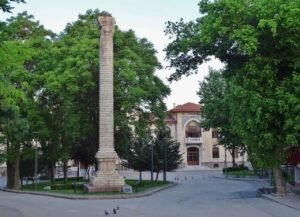Description
Discovering Ankara’s Timeless Wonder: The Julian Column
When most travelers think of Turkey, their minds wander to the bustling streets of Istanbul, the fairy chimneys of Cappadocia, or the sun-drenched beaches of Antalya. Yet hidden within the heart of the country, in the capital city of Ankara, stands a monument that echoes the grandeur of a different era—the Julian Column (Julianus Sütunu). An enduring relic of Roman ambition and artistry, the Julian Column is a must-visit for anyone eager to explore the lesser-known treasures of Anatolia.
A Brief History
The Julian Column was erected in 362 AD to commemorate the visit of the Roman Emperor Julian, known as Julian the Apostate, to Ancyra—the ancient name of Ankara. Julian was on his way to launch a military campaign against the Persian Empire, and Ancyra was a significant stop on his journey eastward.
The people of Ancyra, proud citizens of the Roman Empire, built the column to honor the emperor’s passage and perhaps to curry favor with the ambitious ruler. Although Emperor Julian’s campaign ultimately failed and he died shortly thereafter, the column remained, witnessing centuries of change—from Roman rule to Byzantine, Seljuk, Ottoman, and finally the modern Republic of Turkey.
Today, the Julian Column stands as a silent testament to Ankara’s rich and layered history, connecting visitors with a time when the city was a critical hub in the vast Roman Empire.
Architectural Features
Standing approximately 15 meters (around 49 feet) tall, the Julian Column is an elegant example of Roman column design. It is built from stone and consists of a simple, yet powerful Corinthian style, characterized by ornate carvings of acanthus leaves at the capital (the topmost part).
Unlike some Roman columns that are richly decorated with bas-reliefs or inscriptions, the Julian Column is relatively plain. This simplicity lends it a certain timeless dignity. It rises from a sturdy, square base and tapers slightly as it ascends, a common technique used in ancient times to create an illusion of greater height.
Interestingly, over the centuries, local legends began to surround the column. Some believed that it could miraculously lengthen during times of danger to protect the city. While modern science may dismiss these claims, they add an enchanting layer of folklore to the monument.
Location and Surroundings
The Julian Column is located in the historic Ulus district of Ankara, close to several other important landmarks, such as the Roman Baths, the Temple of Augustus, and the Museum of Anatolian Civilizations. Its central location makes it very accessible, especially for visitors already touring the cultural heart of the city.
Ulus itself is a fascinating area, a vibrant mix of old and new. Narrow streets lead to open squares, traditional shops, and modern cafés. Walking through Ulus feels like traversing layers of time, with Roman ruins, Ottoman-era architecture, and sleek modern buildings existing side by side.
The column stands proudly in a small, landscaped area that’s open to the public. It’s beautifully illuminated at night, casting a golden glow that highlights its centuries-old contours and brings out its historical aura.
Why Visit the Julian Column?
Visiting the Julian Column offers more than just a chance to see an ancient artifact—it’s an invitation to connect with Ankara’s soul. Unlike some historical sites that are heavily commercialized, the Julian Column has maintained a quiet authenticity. There are no long queues, no ticket booths, and no bustling crowds. It’s a place where you can pause, reflect, and imagine the footsteps of Roman soldiers, local citizens, and emperors who once walked these lands.
Furthermore, the column represents an era of transition—not only in terms of political history (the shifting fortunes of the Roman Empire) but also in religious history. Emperor Julian attempted to revive paganism during a time when Christianity was becoming dominant in the empire. Thus, the column stands at a crossroads of ideological, cultural, and historical change.
Practical Tips for Visitors
- Getting There: The Julian Column is located near Ulus Square, easily reachable by public transportation or a short taxi ride from most parts of Ankara. Ulus Metro Station is nearby.
- Best Time to Visit: The column is accessible year-round. However, visiting during the spring or autumn months (April–May or September–October) offers the most pleasant weather for strolling around the area.
- Nearby Attractions: Don't miss the Roman Baths, the Temple of Augustus and Rome, and the Museum of Anatolian Civilizations—all within walking distance.
- Photography Tips: Early morning or evening light provides beautiful soft lighting for photography. Nighttime illumination also makes for stunning shots.
Final Thoughts
In a world where travel often prioritizes the famous and the flashy, there’s something deeply rewarding about visiting places like the Julian Column. It’s a reminder that history isn’t always found in the grand palaces or monumental ruins; sometimes, it’s in the quiet endurance of a single, simple column that has watched empires rise and fall.
For travelers seeking a deeper connection to Turkey’s multifaceted past, a visit to Ankara’s Julian Column is both a journey through history and a step off the well-trodden tourist path. It offers a rare glimpse into the ancient world, hidden in plain sight in the vibrant capital of a modern nation.
Location
-
Hacı Bayram, 06050 Altındağ/Ankara
